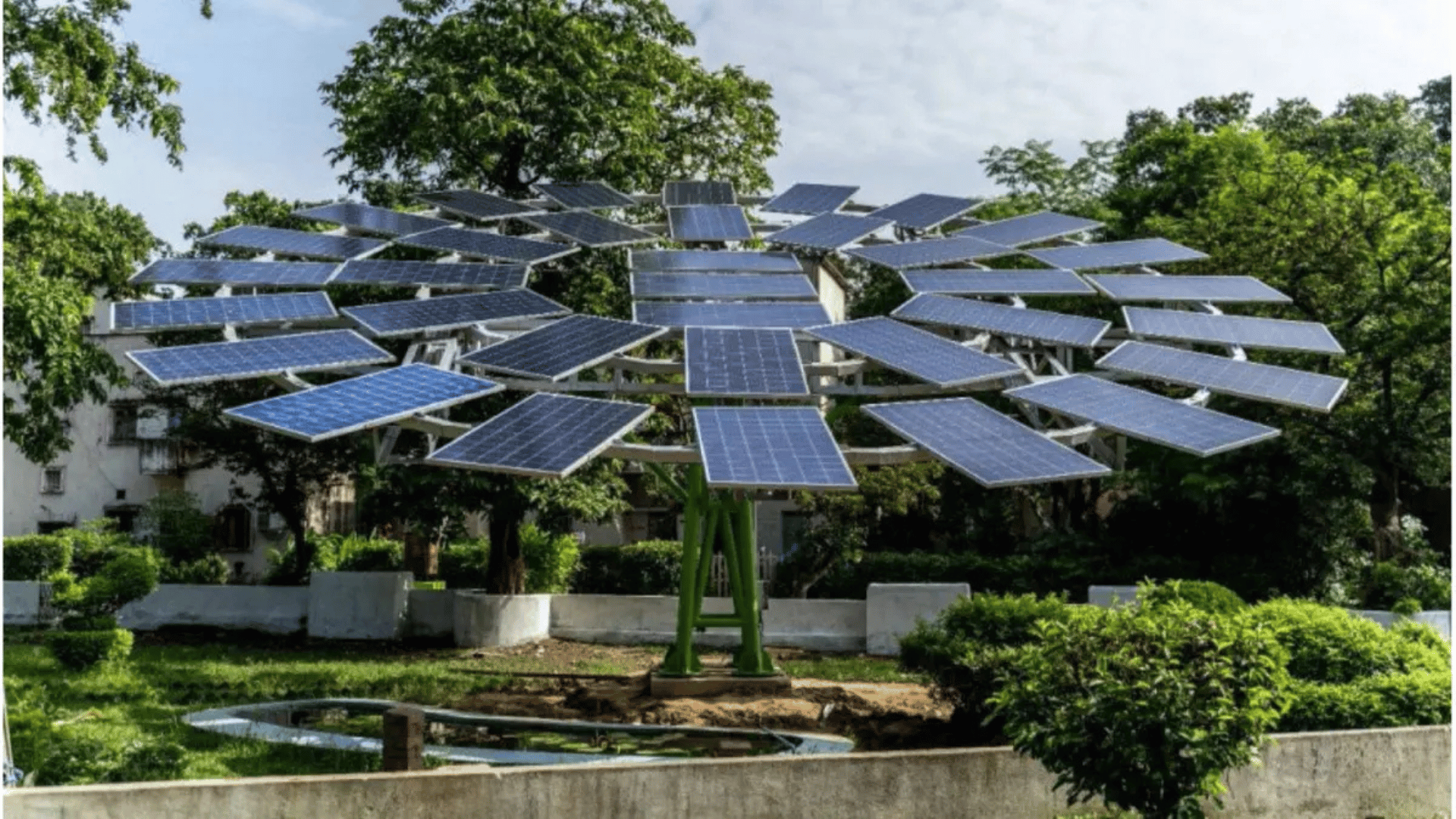A new study suggests that vertical “solar trees” could create as much energy as solar farms while reducing forest loss by 99 percent.
Nature-Inspired Designs Boost Renewable Energy

The potential advantage of solar trees over solar farms is their height, which boosts their efficiency. The study’s findings showed that as few as 63 solar trees could produce 1 megawatt (MW) of power, an output that required a ground-mounted facility to clear 98 percent of the forest on the same site.
“Through 3D geospatial simulations and standard test conditions, we show that linear arrangements of solar tree structures preserve 99 percent of forest cover,” said a new study.
The solar trees in the new study, published in Scientific Reports, are modeled after an installation in Seoul. According to Interesting Engineering, this model stands 15.7 feet (4.8 meters) tall and 13.4 feet (4.1 meters) wide, with branches that hold 35 solar panels. The study considered trees with a capacity of 11.5 kW (using 330 W panels) and 15.8 kW (using 450 W panels).
The paper purports that the vertical structure allows the panels in the upper canopy to generate energy while still allowing light to reach the vegetation beneath.
“Solar energy expansion often comes at the cost of forest destruction, creating fundamental conflicts between renewable energy goals and ecosystem preservation,” added the study.
To analyze the efficiency of this technology, researchers used 3D geospatial data and Google Earth Pro satellite images of the forest from before the plant’s construction. They created a photomontage to plan the placement of solar trees in a 3D terrain model. Through the simulation, the trees were arranged along the area’s boundary and center hiking trail and were spaced out 65 feet to see if they could be added with minimal environmental impact.
This new technology shows that green energy sources can be integrated while maintaining forest ecosystems.
“Solar trees are a promising dual-solution to align energy and environmental priorities as global commitments call for the tripling of renewable capacity by 2030 while maintaining forest preservation pledges,” the study concluded.


